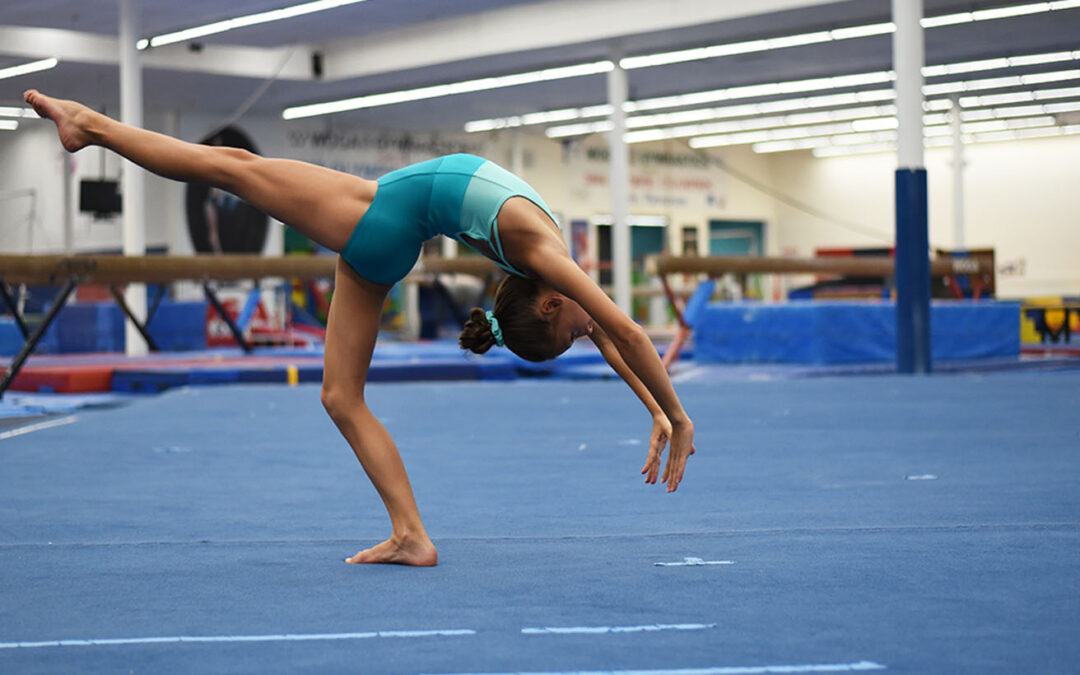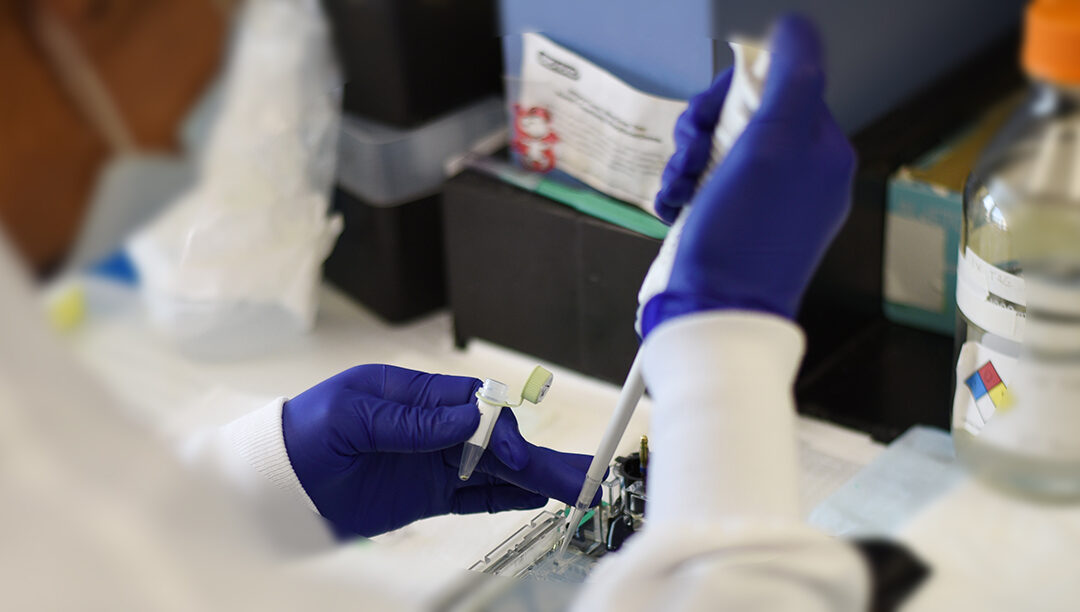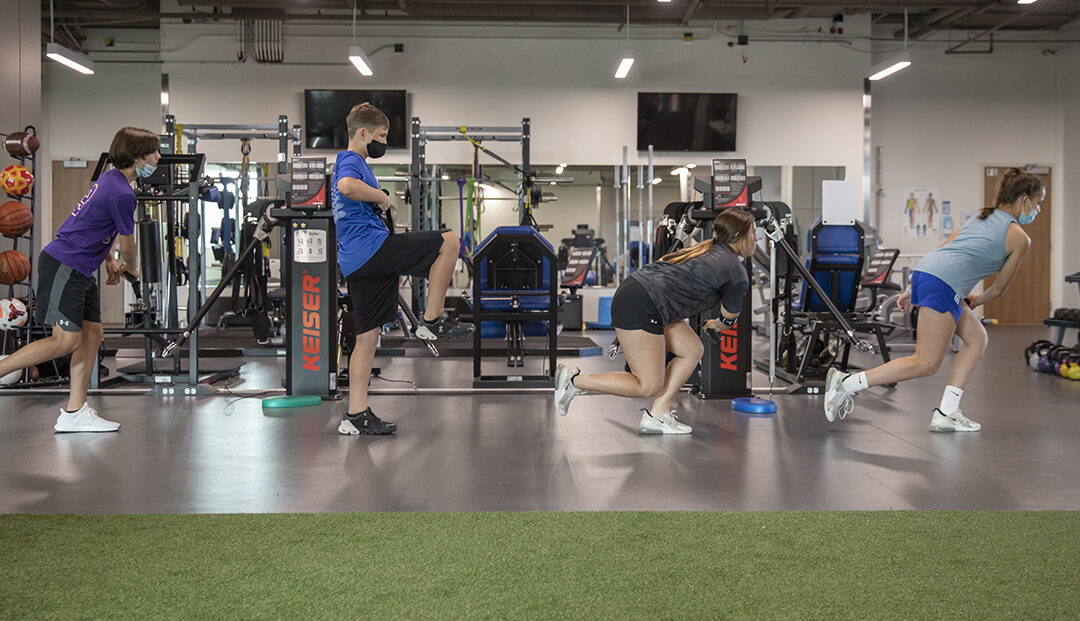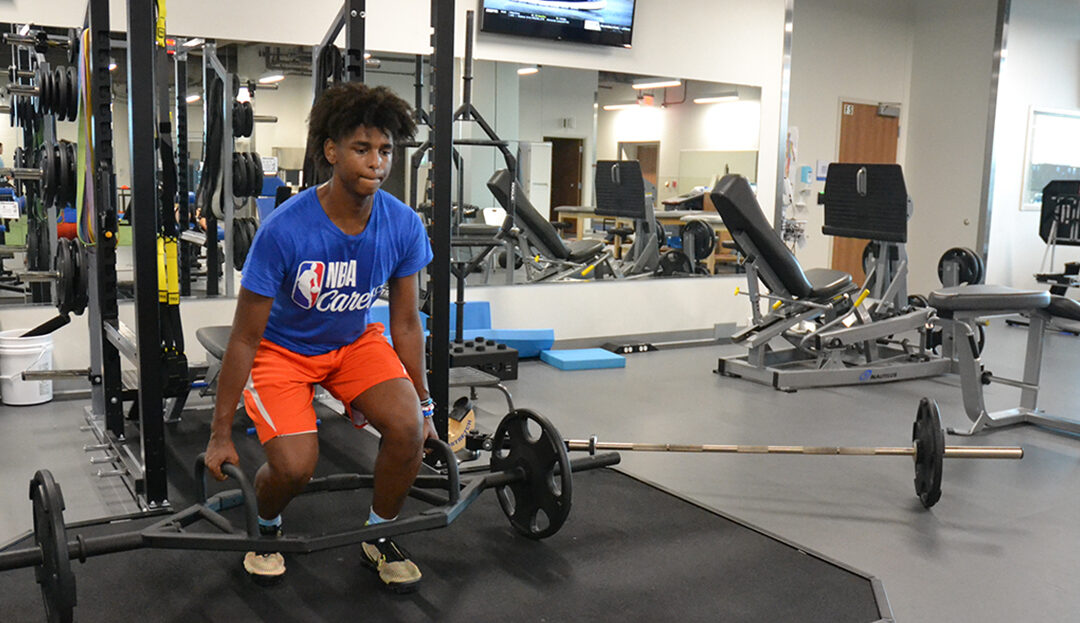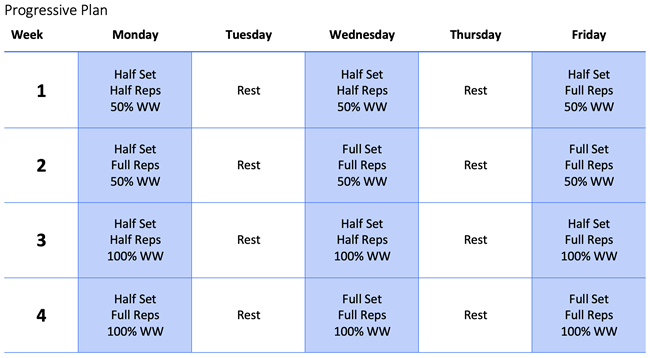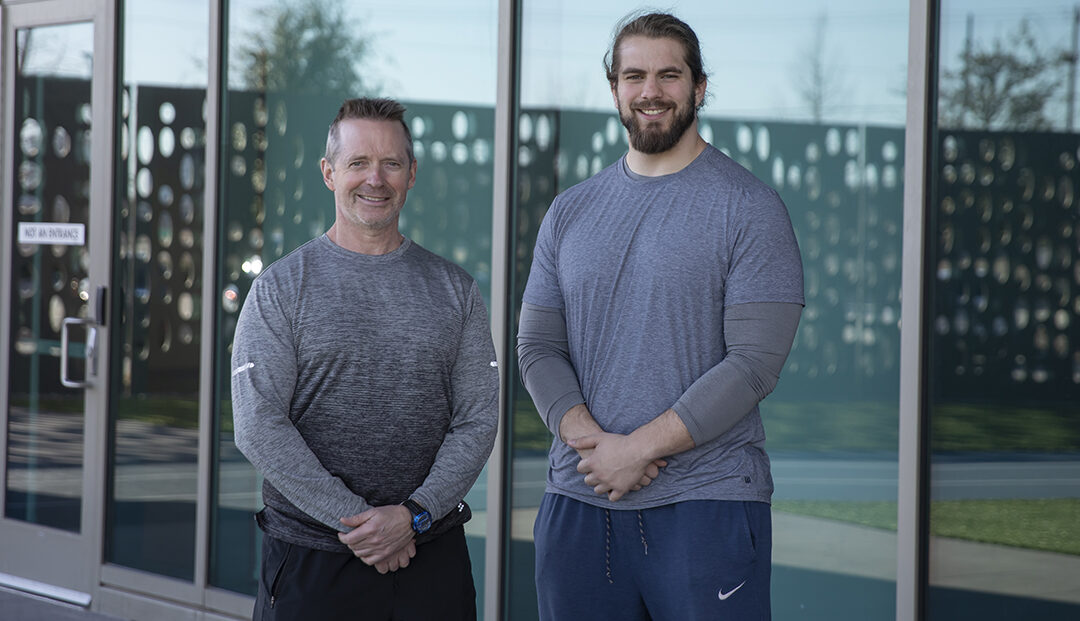
In Strong Hands: Meet the Strength and Conditioning Coaches at Scottish Rite for Children
Certified Strength and Conditioning Specialists® (CSCS®) are professionals with special training and expertise. Standards set by the National Strength and Conditioning Association (NSCA®) are designed to ensure that these coaches have the proper training and skills to promote safe participation in these activities.
As the Bridge Program coordinator, Matt Schiotz, M.S., CSCS, brings experience as an elite-level sports performance coach with more than 20 years of experience coaching diverse groups of athletes. Schiotz’s coaching journey began with the Kansas City Chiefs before moving to the head strength and conditioning coach role at the University of Southern California. He then returned to the NFL as a strength and conditioning coach for more than a decade.
Schiotz’s most recent coaching role was at Baylor Scott and White Sports Performance Center at The Star in Frisco, where he was also the Director of Performance. He has also worked as a performance coach, providing virtual training sessions using app-based programming and data analysis. Schiotz received his Master of Science in Exercise Physiology from the University of Kansas.
“I am very excited to join the team at Scottish Rite,” Schiotz says. “I believe the continuum from physical therapy to performance training is a model balancing safety and maximum outcomes. Though I have worked with athletes of all ages, my true passion is working with young athletes to help them achieve their sport and performance goals. Seeing them return to a sport or activity they love is my reward, especially as a parent myself. Combined with an athlete’s hard work, I am confident that lessons learned in this program will help each participant optimally develop and be set up for a future of athletic success.”
Justin Haser, M.S., CSCS, is an elite-level sports performance coach with experience working with athletes across all sports. Haser began his coaching career at Ohio University before moving on to the University of Pittsburgh, where he worked with the football team.
Before joining the team at Scottish Rite, he was a sports performance coach at Baylor Scott and White Sports Performance Center at The Star in Frisco. He has coached athletes of all backgrounds, from 8-year-olds to professionals in the NFL and NBA. He led the Return to Play Program, designed to serve athletes as they transitioned out of therapy and back to a full return to their sport.
“I am excited to keep things rolling here at Scottish Rite,” Haser says. “I believe the transition period between finishing physical therapy and returning full time to sport can often be overlooked. Having gone through this process twice myself, I know firsthand the challenges an athlete will face. I played Division I football for Ohio University. During my career, I had a shoulder injury that required two surgeries, the second of which ultimately ended my athletic career. After my career ended, I spoke with my strength coach at the time and explained the situation. He invited me to assist in the weight room for my final year and a half prior to my graduation. Ultimately, this experience showed me what I wanted to do professionally and launched my coaching career. I am looking forward to helping these young athletes by providing guidance and support on their journey back to their field of play!”
Scottish Rite for Children in Frisco is offering training classes for young athletes. Sessions begin the first week of each month. Contact our Therapy Services team at 469-515-7150 or [email protected] to learn more.


